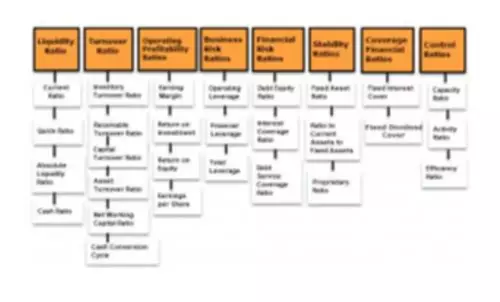3 Ways to Calculate Goodwill
Content

Explain why we need PW analysis in the financial decision process. Explain the parameters needed to calculate the PW using the geometric gradient. Explain why the shareholder’s basis in the new stock received in a corporate reorganization is the value of the stock received less the postponed gain.
How do you calculate goodwill in consolidation?
How is goodwill calculated in consolidated accounts? One of the simplest methods of calculating goodwill is by subtracting the fair market value of a company's net identifiable assets from the price paid for the acquired business.
A working capital adjustment is typically included in a purchase and sale agreement as a means of agreeing on the amount of working capital that existed, and was thus acquired, as of the acquisition date. Examples of working capital adjustments may include adjustments to allowances for returns and rebates and inventory valuation allowances. Payments or receipts for changes in provisional amounts for working capital that occur outside of the measurement period should be recognized in current period earnings.
What is the Goodwill Formula?
The contingent consideration arrangement must first be assessed to determine whether each of the performance targets represents a separate contract. This determination would be based on facts and circumstances, but generally the more substantive (i.e., difficult to achieve) the revenue target, the more likely the arrangement is based predominantly on the revenue target. If the arrangement is determined to be predominantly based on revenues, it would be considered a liability under ASC 480. Illustrates the balance-sheet impacts of purchase accounting on the acquirer’s balance sheet and the effects of impairment subsequent to closing. Assume that Acquirer Inc. purchases Target Inc. on December 31, for $500 million. As of December 31, 2010, it is determined that the fair value of Target Inc. has fallen below its carrying value due largely to the loss of a number of key customers.

Additionally, the acquirer must determine whether any portion of the consideration transferred is not part of the acquisition accounting, but instead relates to a transaction separate from the business combination. If a transaction is entered into by the acquirer and is primarily for the benefit of the acquirer or the combined entity, the transaction should likely be recognized and accounted for separately from the business combination. AT&T, for instance, paid an additional $325 million when it bought NCR, to qualify for pooling, making an awful deal even worse. The prevalence of two different acquisition accounting systems also made it difficult to compare the balance sheet numbers for acquisitive companies that used purchase as opposed to pooling.
Capitalization of Profits
While what is goodwill officially has an indefinite life, impairment tests can be run to determine if its value has changed, due to an adverse financial event. If there is a change in value, that amount decreases the goodwill account on the balance sheet and is recognized as a loss on the income statement. The impairment expense is calculated as the difference between the current market value and the purchase price of the intangible asset. The new standard removes Step 2 of the goodwill impairment test, which requires a hypothetical acquisition purchase price allocation.

This usually happens when the target company is distressed and needs to sell itself off fast. Within this framework, here is what happens after an acquisition. The accountants are called in to reestimate the value of the existing assets and replace the conventional accounting book value with the estimated value. Goodwill then becomes the difference between the price paid by the acquiring company and the reassessed value for existing assets. So, what else goes into the price that an acquirer may pay, besides the value of the existing assets? The excess (purchase price – value of assets) must be immediately recognized by the acquirer in earnings as a gain that increases goodwill from a would-be negative value to zero, per FAS 141r.
Determine the fair market value of the assets
The company is owned 5% by the former CEO and current board member, 1% by each of two management employees (together the “owner-employees”) and 93% by the majority owner. The market value of an asset is the amount of money that you can obtain by selling it at the market now. To understand more on net asset, check out our net operating assets calculator and total asset turnover calculator. We have written this article to help you understand the definition of goodwill and the goodwill calculation. We will also demonstrate some examples to help you understand the calculation.
- For example, if Company X acquired Company Y, but paid more than the net market value of company Y, goodwill is the result.
- If the carrying value exceeds fair value, perform the next step.
- Explain why the non-controlling interest is calculated as at the year-end while goodwill is calculated at the date of acquisition.
- I was hoping some of you smarter monkeys can help me understand why.
- At a bargain price for $2bn, this creates a negative goodwill of $8bn on the books.
For example, holders may have a contingent exercise right or may have their right to exercise accelerated, extended, or eliminated upon satisfaction of a contingency. The acquisition agreement requires Company A to make a $100 million cash payment to the shareholders of Target B on the acquisition date and an additional $30 million cash payment two years after the acquisition date. In a business combination achieved in stages, the acquisition-date fair value of the acquirer’s previously held equity interest in the acquiree. The need to value intangible assets is something most people are unaware of and do not have any experience in.
What is goodwill value?
Therefore, the https://www.bookstime.com/ generated in the transaction is $2 million. Using the first method of measuring NCI, the amount of the goodwill is $26 million ($150m + $16m – $140m). Timothy Li is a consultant, accountant, and finance manager with an MBA from USC and over 15 years of corporate finance experience. Timothy has helped provide CEOs and CFOs with deep-dive analytics, providing beautiful stories behind the numbers, graphs, and financial models.




Add Comment